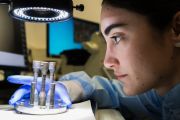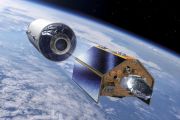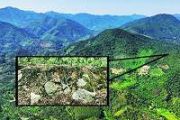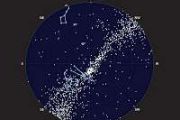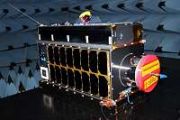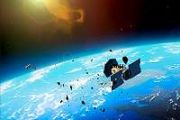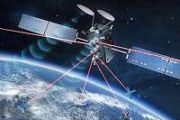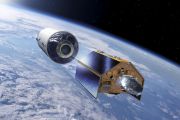
Copernical Team
SpaceDaily Streamlines Imaging Process with ChatGPT Technology
 SpaceDaily, a leading news organization covering space exploration, astronomy, and technology, has implemented ChatGPT's technology, along with simple rules lists and innovative software development, to streamline its imaging process.
The combination of these technologies has enabled SpaceDaily to generate filenames for image files based on their captions and vice versa, while also enablin
SpaceDaily, a leading news organization covering space exploration, astronomy, and technology, has implemented ChatGPT's technology, along with simple rules lists and innovative software development, to streamline its imaging process.
The combination of these technologies has enabled SpaceDaily to generate filenames for image files based on their captions and vice versa, while also enablin New space capability mapping tool unveiled at the 2023 Avalon Airshow
 Satellite Applications Catapult, SmartSat Cooperative Research Centre (CRC), and the UK Government have announced a new space supply chain mapping tool to showcase the United Kingdom (UK) and Australian space sector capabilities. Enabled by the Space Bridge, an alliance between the UK and Australia that enhances cooperation across both nations to boost respective space industries, this mapping t
Satellite Applications Catapult, SmartSat Cooperative Research Centre (CRC), and the UK Government have announced a new space supply chain mapping tool to showcase the United Kingdom (UK) and Australian space sector capabilities. Enabled by the Space Bridge, an alliance between the UK and Australia that enhances cooperation across both nations to boost respective space industries, this mapping t D-Orbit signs launch contract with Patriot Infovention
 On the final day of the Global Space and Technology Convention of Singapore, the space transportation and logistics company D-Orbit has announced the signing of a launch contract with Patriot Infovention, a Thai software company specializing in government assistance services, support and assistance, data management and cyber security. This satellite repre
On the final day of the Global Space and Technology Convention of Singapore, the space transportation and logistics company D-Orbit has announced the signing of a launch contract with Patriot Infovention, a Thai software company specializing in government assistance services, support and assistance, data management and cyber security. This satellite repre Webb reveals intricate networks of gas, dust in nearby galaxies
 Peering through obscuring clouds of dust, the MIRI instrument has revealed networks of giant cavities and blown-out bubbles in the gaseous arms of distant galaxies. Researchers using NASA's James Webb Space Telescope are getting their first look at star formation, gas, and dust in nearby galaxies with unprecedented resolution at infrared wavelengths.
The data has enabled an initial collect
Peering through obscuring clouds of dust, the MIRI instrument has revealed networks of giant cavities and blown-out bubbles in the gaseous arms of distant galaxies. Researchers using NASA's James Webb Space Telescope are getting their first look at star formation, gas, and dust in nearby galaxies with unprecedented resolution at infrared wavelengths.
The data has enabled an initial collect Does ice in the Universe contain the molecules making up the building blocks of life in planetary systems?
 The James Webb Space Telescope - the most precise telescope ever built - was decisive in discovering the frozen forms of a long series of molecules, such as carbon dioxide, ammonia, methane, methanol and even more complex molecules, frozen out as ices on the surface of small dust grains.
The dust grains grow in size when being a part of the discs of gas and dust forming around young stars.
The James Webb Space Telescope - the most precise telescope ever built - was decisive in discovering the frozen forms of a long series of molecules, such as carbon dioxide, ammonia, methane, methanol and even more complex molecules, frozen out as ices on the surface of small dust grains.
The dust grains grow in size when being a part of the discs of gas and dust forming around young stars. New aurorae detected on Jupiter's four largest moons
 Astronomers using W. M. Keck Observatory on Maunakea in Hawai?i have discovered that aurorae at visible wavelengths appear on all 4 major moons of Jupiter: Io, Europa, Ganymede, and Callisto. Using Keck Observatory's High-Resolution Echelle Spectrometer (HIRES) as well as high-resolution spectrographs at the Large Binocular Telescope and Apache Point Observatory, a team led by Caltech and Boston
Astronomers using W. M. Keck Observatory on Maunakea in Hawai?i have discovered that aurorae at visible wavelengths appear on all 4 major moons of Jupiter: Io, Europa, Ganymede, and Callisto. Using Keck Observatory's High-Resolution Echelle Spectrometer (HIRES) as well as high-resolution spectrographs at the Large Binocular Telescope and Apache Point Observatory, a team led by Caltech and Boston Study quantifies global impact of electricity in dust storms on Mars
 Mars is infamous for its intense dust storms, some of which kick up enough dust to be seen by telescopes on Earth.
When dust particles rub against each other, as they do in Martian dust storms, they can become electrified, transferring positive and negative electric charge in the same way as you build up static electricity if you shuffle across a carpet.
Strong electric fields build
Mars is infamous for its intense dust storms, some of which kick up enough dust to be seen by telescopes on Earth.
When dust particles rub against each other, as they do in Martian dust storms, they can become electrified, transferring positive and negative electric charge in the same way as you build up static electricity if you shuffle across a carpet.
Strong electric fields build Biology and Robotics Research Occupy Crew
 A multitude of advanced microgravity research benefitting humans and robotics took precedence aboard the International Space Station on Thursday.
Two Expedition 68 astronauts investigated how living in space affects the way a crew member reaches for and grasps objects. NASA Flight Engineer Josh Cassada has been working in the Columbus laboratory module all week exploring how spaceflight im
A multitude of advanced microgravity research benefitting humans and robotics took precedence aboard the International Space Station on Thursday.
Two Expedition 68 astronauts investigated how living in space affects the way a crew member reaches for and grasps objects. NASA Flight Engineer Josh Cassada has been working in the Columbus laboratory module all week exploring how spaceflight im Japan's H3 rocket fails to leave the launch pad
 Another setback for Japan Aerospace Exploration Agency (JAXA). Japan's H3 rocket was scheduled to lift off from Tanegashima Space Center, Japan at 10:37 a.m. Japan Standard Time on February 17th.
It was supposed to launch Advanced Land Observing Satellite-3 (ALOS-3), also known as Daichi-3 into a Sun-synchronous orbit (SSO). ALOS-3 is an advanced, Earth observing satellite, to be used for
Another setback for Japan Aerospace Exploration Agency (JAXA). Japan's H3 rocket was scheduled to lift off from Tanegashima Space Center, Japan at 10:37 a.m. Japan Standard Time on February 17th.
It was supposed to launch Advanced Land Observing Satellite-3 (ALOS-3), also known as Daichi-3 into a Sun-synchronous orbit (SSO). ALOS-3 is an advanced, Earth observing satellite, to be used for An extremely lightweight fission rocket could reach the solar gravitational lens in 15 years
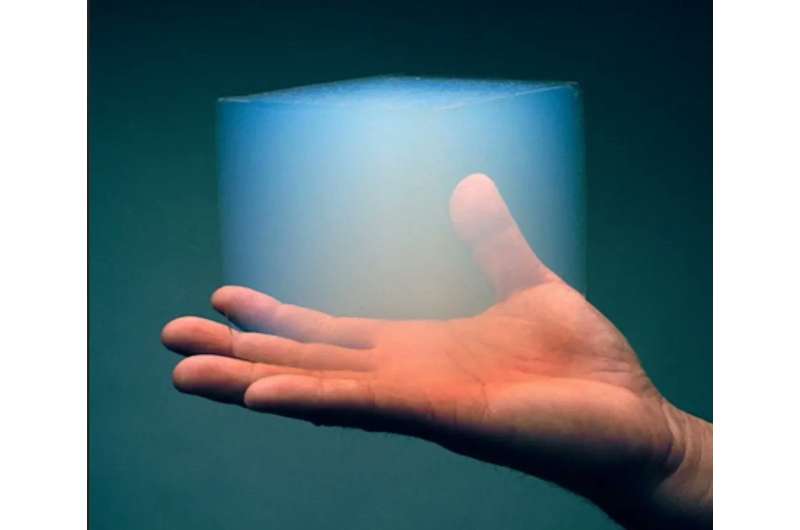
Novel propulsion ideas for moving around space seem like they're a dime a dozen recently. Besides the typical argument between solar sails and chemical propulsion lies a potential third way—a nuclear rocket engine. While we've discussed them here at UT before, NASA's Institute of Advanced Concepts has provided a grant to a company called Positron Dynamics for the development of a novel type of nuclear fission fragment rocket engine (FFRE). It could strike the balance between the horsepower of chemical engines and the longevity of solar sails.
FFREs are not a new concept in themselves, but many have massive technical hurdles to overcome before they can be considered useful. Their advantages, such as high specific impulse and extremely high power density, are offset by their disadvantages, such as requiring a complicated form of plasma levitation.







